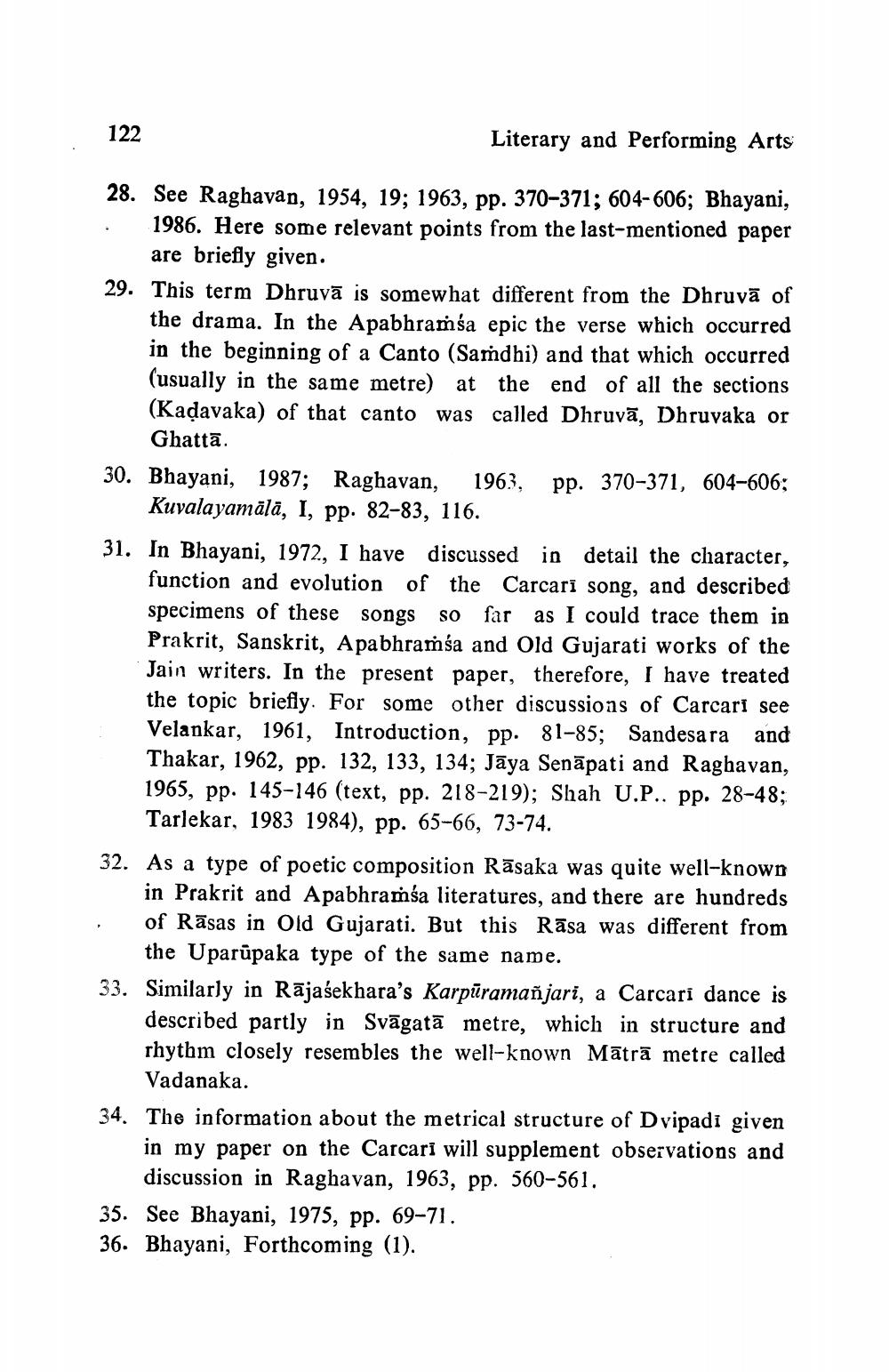________________
122
Literary and Performing Arts
28. See Raghavan, 1954, 19; 1963, pp. 370-371; 604-606; Bhayani,
1986. Here some relevant points from the last-mentioned paper
are briefly given. 29. This term Dhruvā is somewhat different from the Dhruvā of
the drama. In the Apabhramśa epic the verse which occurred in the beginning of a Canto (Samdhi) and that which occurred (usually in the same metre) at the end of all the sections (Kadavaka) of that canto was called Dhruvā, Dhruvaka or
Ghattā. 30. Bhayani, 1987; Raghavan, 1963, pp. 370-371, 604-606;
Kuvalayamālā, I, pp. 82-83, 116. 31. In Bhayani, 1972, I have discussed in detail the character,
function and evolution of the Carcarī song, and described specimens of these songs so far as I could trace them in Prakrit, Sanskrit, Apabhramśa and Old Gujarati works of the Jain writers. In the present paper, therefore, I have treated the topic briefly. For some other discussions of Carcari see Velankar, 1961, Introduction, pp. 81-85: Sandesara and Thakar, 1962, pp. 132, 133, 134; Jāya Senāpati and Raghavan, 1965, pp. 145-146 (text, pp. 218-219); Shah U.P.. pp. 28-48;
Tarlekar, 1983 1984), pp. 65-66, 73-74. 32. As a type of poetic composition Rāsaka was quite well-known
in Prakrit and Apabhramśa literatures, and there are hundreds of Rāsas in Old Gujarati. But this Rāsa was different from
the Uparūpaka type of the same name. 33. Similarly in Rājasekhara's Karpūramañjari, a Carcari dance is
described partly in Svāgatā metre, which in structure and rhythm closely resembles the well-known Mātrā metre called
Vadanaka. 34. The information about the metrical structure of Dvipadi given
in my paper on the Carcari will supplement observations and
discussion in Raghavan, 1963, pp. 560-561. 35. See Bhayani, 1975, pp. 69-71. 36. Bhayani, Forthcoming (1).




